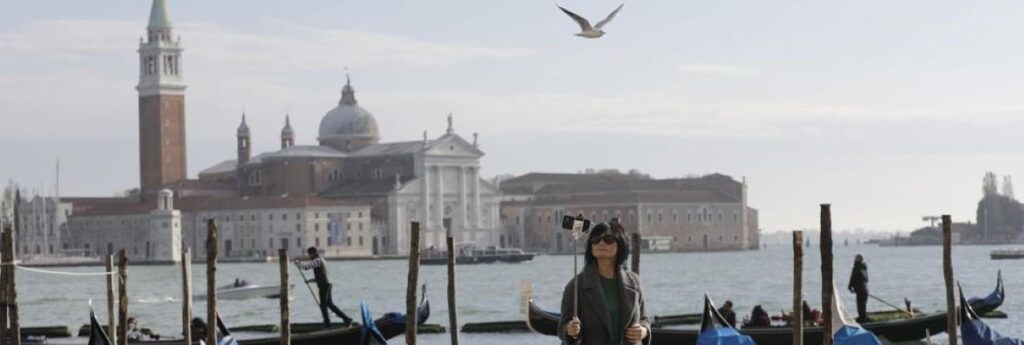Venice has often been called a real-life theme park. Now, starting in January, day-trippers to the historic Italian lagoon city must make reservations and pay a fee to visit, not unlike a day at Disneyland.
The plan is designed to help the city better manage visitors who often far outnumber residents in the historic centre, clogging narrow streets and heavily used foot bridges crossing the canals.
Effective Jan. 16, 2023, tourists who choose not to stay overnight in hotels or other lodgings will have to sign up online for the day they plan to come and pay between €3 and €10 ($4-$13) per person, depending on advance booking and whether it’s peak season or the city is very crowded.
Transgressors risk fines as high as €300 (about $394) if stopped and unable to show proof they booked and paid with a QR Code.
Roughly four-fifths of all tourists come to Venice just for the day. In 2019, the last full year of tourism before the pandemic, some 19 million day-trippers visited Venice and provided just a fraction of the revenue from those staying for at least one night.
Venice’s tourism commissioner brushed off any suggestion that the measure would seek to limit the number of out-of-towners coming to Italy’s most-visited city.
“We won’t talk about number cut-offs. We’re talking about incentives and disincentives,” Simone Venturini said.
The reservation-and-fee approach had been discussed a few years ago (and officially announced in late 2019) but was put on hold during the pandemic. COVID-19 travel restrictions saw tourism in Venice nearly vanish – and let Venetians have their city practically to themselves, for the first time in decades.
Mass tourism began in the mid-1960s. Visitor numbers kept climbing, while the number of Venetians living in the city steadily dwindled, overwhelmed by congestion, the high cost of delivering food and other goods in car-less Venice, and frequent flooding that damages homes and businesses.
Since guests at hotels and pensions already pay a lodging tax, they are exempt from the reserve-and-fee obligation.
With the new rule, Venice aims to “find this balance between (Venetian) resident and long-term and short-term” visitors, Venturini said, promising that the new system “will be simple for visitors” to manage. He billed Venice as the first city in the world putting such a system for day-only visitors in place.
The tourism official expressed hope that the fee-and-reservation obligation will “reduce frictions between day visitors and residents.” In peak tourism system, tourists can outnumber residents 2-to-1 in the city that measures 5 sq. km. in area.
Venice’s resident population is just over 50,000, a small fraction of what it was a couple of generations ago.
Exceptions to the day-tripper fees include children younger than six, people with disabilities, and those owning vacation apartments in Venice, provided they can show proof they pay real estate taxes.
Cruise ships contribute to the hordes of visitors swarming Venice’s maze of narrow streets, especially near St. Mark’s Square, when they disembark day-trippers for a few hours. Those visitors will have to pay, too, unless their cruise liner company pays a set fee to Venice.

